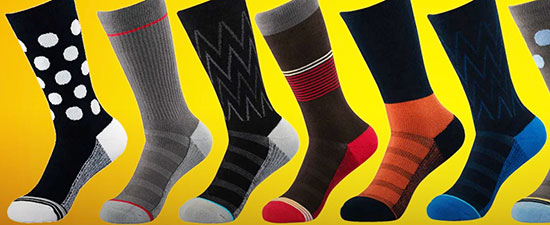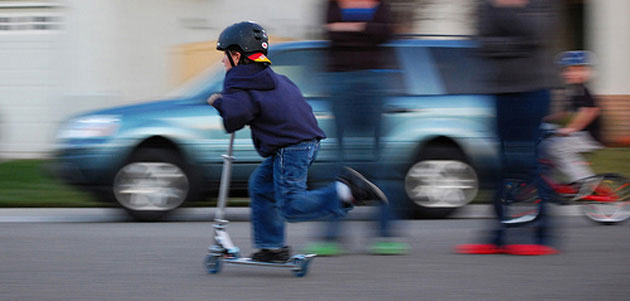- Home
- Foot & Ankle Conditions
- Less Common Conditions
- Peroneal Tendon Injuries
Peroneal Tendon Tear and Dysfunction
- Published 11/1/2023
- Last Reviewed 2/19/2024
In this video, we discuss peroneal tendon injuries and their treatment options.
It can be difficult to distinguish one ankle injury from another. Thankfully, our foot and ankle specialists and orthopedic surgeons are trained trauma experts and have decades of extensive experience in treating ankle tendon injuries, including peroneal tendon injuries. In fact, University Foot & Ankle Institute’s foot and ankle specialists often teach our peroneal tendon repair techniques to other doctors and clinics.
A peroneal tendon tear is when one or both of the bands of tissue in your ankle — the peroneal brevis and peroneal longus — tear as a result of injury or overuse. There are a few different types of tears, and each can vary in level of severity, making it important to receive adequate diagnosis and proper treatment.
- Previous
- Condition
-
Foot and Ankle Surgeon at University Foot and Ankle Institute
Dr. Abimbola Johnson completed his undergraduate degree at Loyola University Chicago, where he played Division II rugby and was also involved in social justice clubs aimed at helping younger students prepare for college.
Upon graduation, he entered Scholl College of Podiatric Medicine, where he served as president of the practice management club and volunteered as coordinator at the Free Foot Clinic in Chicago. He served his residency at Regions Hospital/Health Partners in St. Paul.
Dr. Johnson provides comprehensive medical and surgical care for a wide spectrum of foot and ankle conditions, including common and complex disorders and injuries. The doctor is uniquely qualified to detect the early stages of disease that exhibit warning signs in the lower extremities, such as diabetes, arthritis, and cardiovascular disease.
Dr. Johnson can be seen at our Santa Barbara location
 From the staff to the surgeon this place is superb. Can’t talk enough how perfect my feet are and how fast the recovery is. I h...Baby C.
From the staff to the surgeon this place is superb. Can’t talk enough how perfect my feet are and how fast the recovery is. I h...Baby C. Keep doing such amazing workAngel C.
Keep doing such amazing workAngel C. The referrals came through quickly and they called me to book an appointment for physical therapy which nobody else does!Catriona D.
The referrals came through quickly and they called me to book an appointment for physical therapy which nobody else does!Catriona D. Good.Lisa E.
Good.Lisa E. ExcellentRichard A.
ExcellentRichard A. I like him and will
I like him and will
Recommend him to friendsMaureen K. Doctor is very personable and agreeable. Great professional.Joel C.
Doctor is very personable and agreeable. Great professional.Joel C. Dr. Nalbandian is the best. I had shots in both ankles and she was so very gentle. Very warm and friendly.Michelle G.
Dr. Nalbandian is the best. I had shots in both ankles and she was so very gentle. Very warm and friendly.Michelle G. Thorough, competent and my Feet are feeling better. I valued the shoe recommendations too.Nancy R.
Thorough, competent and my Feet are feeling better. I valued the shoe recommendations too.Nancy R. The office is located in Suite 140 on the first floor providing easy access from the parking lot. That's a REAL plus for me usi...Howard S.
The office is located in Suite 140 on the first floor providing easy access from the parking lot. That's a REAL plus for me usi...Howard S. Very pleased with UFAIVirginia H.
Very pleased with UFAIVirginia H. I saw Dr. Briskin two years ago for a sharp pain in the ball of my foot. After x-rays, he diagnosed me with a fractured sesamo...Maya F.
I saw Dr. Briskin two years ago for a sharp pain in the ball of my foot. After x-rays, he diagnosed me with a fractured sesamo...Maya F.
-
 Listen Now
Have Heel and Knee Pain? It Could Be the Way You Walk
Read More
Listen Now
Have Heel and Knee Pain? It Could Be the Way You Walk
Read More
-
 Listen Now
Can Plantar Fasciitis Socks Relieve Foot Pain?
Read More
Listen Now
Can Plantar Fasciitis Socks Relieve Foot Pain?
Read More
-
 Listen Now
Toy Scooter Related Injuries: what you need to you know
Read More
Listen Now
Toy Scooter Related Injuries: what you need to you know
Read More
-
 Listen Now
Common Prescriptions and OTC Medications That Affect Your Feet and Certain Foot and Ankle Conditions
Read More
Listen Now
Common Prescriptions and OTC Medications That Affect Your Feet and Certain Foot and Ankle Conditions
Read More
-
 FDA Warns of Serious Risks from Antibiotics to Tendons, Muscle & Joints
Read More
FDA Warns of Serious Risks from Antibiotics to Tendons, Muscle & Joints
Read More
-
 Listen Now
What's Plantar Tendonitis and Why is it Still a "Medical Mystery"?
Read More
Listen Now
What's Plantar Tendonitis and Why is it Still a "Medical Mystery"?
Read More








